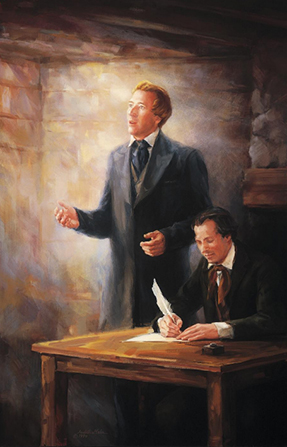To accompany your Come Follow Me study for January 6-12
In addition to reading this section, you would enjoy looking at the following related commentary:
- Chapter 2: Doctrine and Covenants 1 (churchofjesuschrist.org)
- Joseph Smith’s Revelations, Doctrine and Covenants 1 (churchofjesuschrist.org)
You may also enjoy the following videos:
If you would like to have a Kahoot game related to this material that you can use with your family or with a class, click here: https://create.kahoot.it/share/doctrine-and-covenants-1/766d73ce-a0ae-4142-8f78-cdb53aa91e71. To use it with a group, after clicking on this link, you will need to log into Kahoot, creating a free account if you have not done so previously, then click on the blue “Host Live” button or the gray “Assign” button, depending on how you wish to use the Kahoot. Some of the Kahoot questions may presuppose that the player has read through the suggested answers to the following Points to Ponder and at least has browsed the Institute student manual as well.
MY FIRST LOVE
Of all the four standard works, the Doctrine and Covenants is the first one with which I fell in love. As a twelve year old boy, I had dutifully tried to read the Book of Mormon. It wasn’t long before I got bogged down and lost interest—quite possibly in the Isaiah chapters at the end of 2 Nephi.
I didn’t make a serious effort to read any scripture again until sometime in my mid-teens, when I was in seminary. Our teacher had divided the class into teams and established some competition, presumably with some prize for the winning team. We could win points for our team in a variety of ways, including by reading any one of the standard works from beginning to end. I was sufficiently competitive that I accepted the challenge. I knew I didn’t want to tackle the Book of Mormon, as I had already tried that. The Bible looked even longer. But the Pearl of Great Price was so short that I didn’t think I could choose it without feeling I had just taken the easy way out. So, left with only one alternative, I picked up the Doctrine and Covenants. I even bought a copy of a Doctrine and Covenants commentary to help me with the historical background and potentially difficult passages.
I had not read for many days before something new and wonderful happened to me. I felt an excitement and joy I had never felt before in my life to the same extent. I literally wanted to stand on my bed and jump up and down—but there was danger I would bump my head on the low ceiling. The excitement and joy were accompanied by feelings of love, peace, and certainty. I knew, as I surely as I had ever known anything, that what I was reading was true. Joseph Smith was indeed a prophet of God. The Doctrine and Covenants was the voice of God, speaking through Joseph Smith, to me. I have never been the same.
I became something of a teenage fanatic. I carried the Doctrine and Covenants with me when I went out to tend the irrigation water on my dad’s small farm. More than once, I’m sure, I let the water pond up at the bottom of the field, as I became so engrossed in what I was reading.
When I finally finished the book, I felt sad that there was no more. But I decided to give the Book of Mormon another chance. I picked it up and found they had changed it wonderfully since my first attempt to read it three or four years earlier! (The real changes, of course, were in me.) I found that despite my earlier impressions, the Book of Mormon radiated the same wonderful spirit as did the D&C. I later found that the Pearl of Great Price, the New Testament, and finally the Old Testament did as well. Even more importantly, so did the conference messages and other sermons and writings of our living prophets and apostles!
I am grateful for the opportunity this coming year to relive, along with you, my first experience of “falling in love” with the Doctrine and Covenants. It still has that wonderful spirit about it. My hope is that my weekly Points to Ponder can help us all to better appreciate the Lord’s message to us today.
In addition to reading Doctrine and Covenants 1 this week, you will enjoy reading
- “William McClellin’s Five Questions” in the collection entitled Revelations in Context in the Restoration and Church History section of the Gospel Library or at https://www.churchofjesuschrist.org/study/manual/revelations-in-context/william-mclellins-five-questions?lang=eng
- The entry entitled “Doctrine and Covenants” in the collection entitled Church History Topics in the Gospel Library or at https://www.churchofjesuschrist.org/study/history/topics/doctrine-covenants?lang=eng
- The Introduction to the Doctrine and Covenants which precedes section 1.
You may also enjoy any or all of the following related videos:
Points to Ponder in Doctrine and Covenants 1
1. In what way is the Doctrine and Covenants most different from the other three standard works of The Church of Jesus Christ of Latter-day Saints?
2. Who served as “witnesses” for the Doctrine and Covenants in much the same way as the Three Witnesses and Eight Witnesses provided testimony of the truthfulness of the Book of Mormon? In your own words, what was the testimony of the witnesses of the D&C?
3. Why would you not recommend that D&C 1 be put in chronological order in the next edition?
4. What two meanings could the word “hearken” have in 1:1?

5. What is it that every eye will see, every ear hear, and with which every heart will be penetrated? (1:2)
6. D&C 1:4 speaks of the “voice of warning.” Of what is the Lord trying to warn us? In 1:12 he says “prepare ye, prepare ye.” What are the most essential ways in which you believe the Lord wants us to prepare? And for what are we to be prepared?

7. In addition to our being judged for our works in general, D&C 1 specifically emphasizes that our future reward will be commensurate with what?

8. At least three verses in D&C 1 use Old Testament imagery. Identify any two and explain in modern English what you think each passage is saying.
9. What implications do you see in 1:14 and/or 1:38 that you believe could use further emphasis among Latter-day Saints generally?
10. Can you reword the essential idea of 1:16 to make it more intelligible to a 12 year old?
11. What modern manifestations of “idolatry” do you feel are the greatest threats today?
12. The Lord suggests in 1:17 that the D&C was given in part to help prepare us for the “calamity” which is to come. In what ways do you see the D&C as helping in that preparation?
13. What are the “weak things” spoken of in 1:19, and how are they to “break down the mighty and strong ones”?
14. If “man should not counsel his fellow man” (1:19), why do so many members take up so much of their bishop’s time sharing their problems with him, and so many others go to psychotherapists? Should bishops and Latter-day Saint therapists cite this passage to those who come to them for counsel?
15. Can you list at least seven specific purposes of the D&C to which the Lord alludes in section 1?
16. What do you think it means that “these commandments were given unto my servants in their weakness, after the manner of their language”? (v. 24)
17. Why was the Lord more pleased with the Church collectively than individually? (1:30.)
18. If the Lord can’t look upon sin with the least degree of allowance, what hope is there for any of us? (1:31).
19. What personal instances have you seen of the principle spoken of in 1:33 that “he that repents not, from him shall be taken even the light which he has received”?
20. Has the day come yet when peace has been taken from the earth, as foretold in 1:35, or is the Lord speaking of a still future event?
21. Is 1:36 speaking of millennial, pre-millennial but future, or current conditions? Why do you think so?
22. Which do you consider the most important word in 1:37? Why? What does it mean?
Possible Answers to Points to Ponder in D&C 1
1. In what way is the Doctrine and Covenants most different from the other three standard works of The Church of Jesus Christ of Latter-day Saints?
The other three are primarily translations of the writings of ancient prophets. The D&C is unique in that it is a record of selected revelations given to a modern prophet.
The D&C also differs from the other three in that the others tell a story. The D&C does not, but rather is a collection of often disjointed divine revelations given primarily through Joseph Smith to give needed direction to the newly restored latter-day Church. The student will find it most helpful to read Saints, volume 1, from the Gospel Library along with the Doctrine and Covenants, to better understand the historical setting in which the revelations were given. Other helpful resources in the Restoration and Church History folder in the Gospel Library include Revelations in Context, Our Heritage, Church History Topics, and Gospel Topics Essays.
2. Who served as “witnesses” for the Doctrine and Covenants in much the same way as the Three Witnesses and Eight Witnesses provided testimony of the truthfulness of the Book of Mormon? In your own words, what was the testimony of the witnesses of the D&C?
The entire Quorum of Twelve Apostles bore testimony that they knew through personal revelation that the revelations in the D&C were true and were from God.
3. Why would you not recommend that D&C 1 be put in chronological order in the next edition?
The Lord revealed section 1 to serve as a preface. (1:6) If it were put in chronological order, it would be section 66 and would lose its value as an introduction to the following sections.
4. What two meanings could the word “hearken” have in 1:1?
- Pay attention to the teachings which are about to follow, as recorded in the D&C.
- Listen personally to the voice of the Lord.
5. What is it that every eye will see, every ear hear, and with which every heart will be penetrated? (1:2)
All will someday hear the fulness of the gospel taught in plainness and will come to know it is true, regardless of whether or not they are willing to live it.
6. D&C 1:4 speaks of the “voice of warning.” Of what is the Lord trying to warn us? In 1:12 he says “prepare ye, prepare ye.” What are the most essential ways in which you believe the Lord wants us to prepare? And for what are we to be prepared?
The Lord warns of both temporal and spiritual calamities. Of the two, the spiritual ones are by far the most serious. Preparation would include learning the gospel, strengthening one’s testimony, affiliating regularly with the Saints, and committing oneself to personal righteousness. This would be more urgent and more eternally important than accumulating food storage and making other preparations for temporal calamities, though those preparations are also necessary.
7. In addition to our being judged for our works in general, D&C 1 specifically emphasizes that our future reward will be commensurate with what?
The generosity we have shown our fellow men (1:10.)
8. At least three verses in D&C 1 use Old Testament imagery. Identify any two and explain in modern English what you think each passage is saying.
- v. 13: The sword being bathed in heaven is imagery from Isaiah 34:5. Other translations of the passage suggest it may mean the Lord’s sword will be “satiated,” or “satisfied,” presumably from having symbolically been used so freely in the latter-day destruction of the wicked.

- v. 16: Reference to Babylon is to the wicked world, which Babylon symbolized.

- v. 36: Reference to Idumea is to Old Testament Edom, the abode of the descendants of Esau, with whom Israel often had poor relations and which came, as Babylon, to symbolize wickedness.
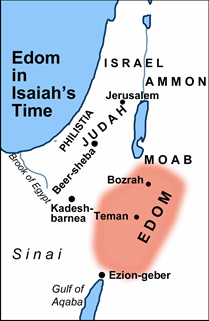
9. What implications do you see in 1:14 and/or 1:38 that you believe could use further emphasis among Latter-day Saints generally?
Those who really believed these verses would probably attend all possible sessions of general conference, read the conference issues of the Ensign, and buy and study such books as The Teachings of Russell M. Nelson, as a beginning.
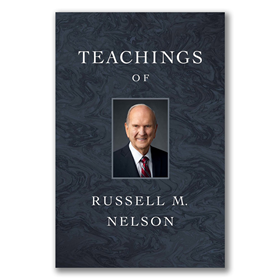
10. Can you reword the essential idea of 1:16 to make it more intelligible to a 12 year old?
How about: “Everyone is more interested in ‘doing his own thing’ and seeking for worldly wealth and pleasure than in doing what the Lord wants him to. In that sense money and worldly pleasures have become his god. But in the end, they can bring him no lasting joy.”
11. What modern manifestations of “idolatry” do you feel are the greatest threats today?
Your choice. Possibilities could include: wealth, popularity, status, leisure, physical pleasures, recreation, etc. There is little danger of anyone in our Western society today literally worshipping a golden calf, as people did in Moses’ time.
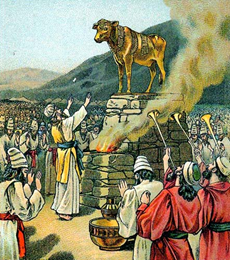

12. The Lord suggests in 1:17 that the D&C was given in part to help prepare us for the “calamity” which is to come. In what ways do you see the D&C as helping in that preparation?
The D&C will prepare us spiritually to withstand the temptations of the latter days as well as instruct us on how we can build a Zion society where safety from temporal dangers can also be found.
13. What are the “weak things” spoken of in 1:19, and how are they to “break down the mighty and strong ones”?
Certainly, it would include 18 and 19 year old missionaries, whose work will ultimately triumph over the efforts of the worldly wise and powerful. And it would include humble lay bishops and other priesthood leaders, not trained for the ministry nor possessing theological degrees, who will nonetheless lead the Church forward beyond anything which could be imagined by a professional clergy.

14. If “man should not counsel his fellow man” (1:19), why do so many members take up so much of their bishop’s time sharing their problems with him, and so many others go to psychotherapists? Should bishops and Latter-day Saint therapists cite this passage to those who come to them for counsel?
The passage should not be taken to mean that we shouldn’t consider good advice and ideas from trusted leaders, parents, and therapists, but that we should not turn over to any human being the responsibility for making our own final decisions. The Lord desires that men come to Him for counsel,inspiration, and confirmation rather than rely on the wisdom and training of those who don’t know His gospel or uphold His standards. Wise leaders and therapists can help, as long as we don’t substitute them for the Lord’s inspiration. As a matter of fact, there probably are too many saints who expect bishops and therapists to do for them that which the Lord intended they should do for themselves in direct consultation with Him.
15. Can you list at least seven specific purposes of the D&C to which the Lord alludes in section 1?
Purposes of the D&C mentioned in section 1:
- To prepare the saints for calamities to come (v. 17)
- That the weak might break down the mighty and strong (v. 19, 23)
- That every man might speak in the name of the Lord (v. 20)
- That faith might increase (v. 21)
- That the Lord’s everlasting covenant might be established (v. 22)
- That God’s servants might come to understanding (v. 24)
- That error might be made known (v. 25)
- That those who sought wisdom might be instructed (v. 26)
- That sinners might be chastened (v. 27)
- That the humble might be made strong and blessed with knowledge (v. 28)
- That the church might be brought forth out of obscurity (v. 30)
16. What do you think it means that “these commandments were given unto my servants in their weakness, after the manner of their language”? (v. 24)
Though the information and concepts of the revelations in the Doctrine and Covenants comes from the Lord, He allowed Joseph Smith to express them in language with which he was familiar. Joseph had perhaps the equivalent of a third grade formal education, though he was self-taught in the Bible. Therefore, the language of the Doctrine and Covenants is comparatively simple and understandable, though it is similar in many respects to the language of the King James Version of the Bible, with which the young prophet was familiar and which would have seemed to him an appropriate way of expressing divine truths.
17. Why was the Lord more pleased with the Church collectively than individually? (1:30.)
On the whole, the Church was making good progress and carrying forth the work of the Lord, though the Lord was displeased with some individual members who were not contributing to that work and were breaking commandments. Certainly, the Lord was and is pleased with those who are doing their best. It’s the ones who are not who incur His displeasure.
18. If the Lord can’t look upon sin with the least degree of allowance, what hope is there for any of us? (1:31).
The Lord hates the sin but loves the sinner. Through the gift of His Son, He has made it possible for each of us to be cleansed from our sins.
19. What personal instances have you seen of the principle spoken of in 1:33 that “he that repents not, from him shall be taken even the light which he has received”?
Most of us have seen sad cases of previously active members who fall into transgression and soon lose the testimony and enthusiasm for the gospel that they once had.
20. Has the day come yet when peace has been taken from the earth, as foretold in 1:35, or is the Lord speaking of a still future event?
Decades ago, Elder Bruce R. McConkie declared:
“Peace has been taken from the earth, the angels of destruction have begun their work, and their swords shall not be sheathed until the Prince of Peace comes to destroy the wicked and usher in the great Millennium.” (April 1979 General Conference). No doubt the world may see times in the future still more turbulent.
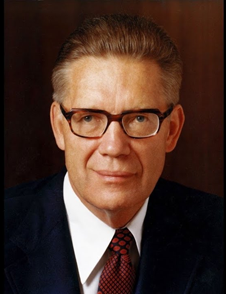
21. Is 1:36 speaking of millennial, pre-millennial but future, or current conditions? Why do you think so?
President Harold B. Lee taught that the Lord even now reigns in the midst of His saints through the priesthood. Certainly, the day will come when he will reign in their midst personally and openly, in the Millennial era.
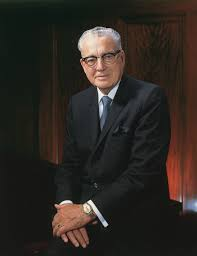
22. Which do you consider the most important word in 1:37? Why? What does it mean?
Probably “search”–which means to look for something, rather than just passively browse. Certainly, as we study the Doctrine and Covenants this year, we will want to “search” for its application in our lives, not just passively read it so we can say we completed it.
